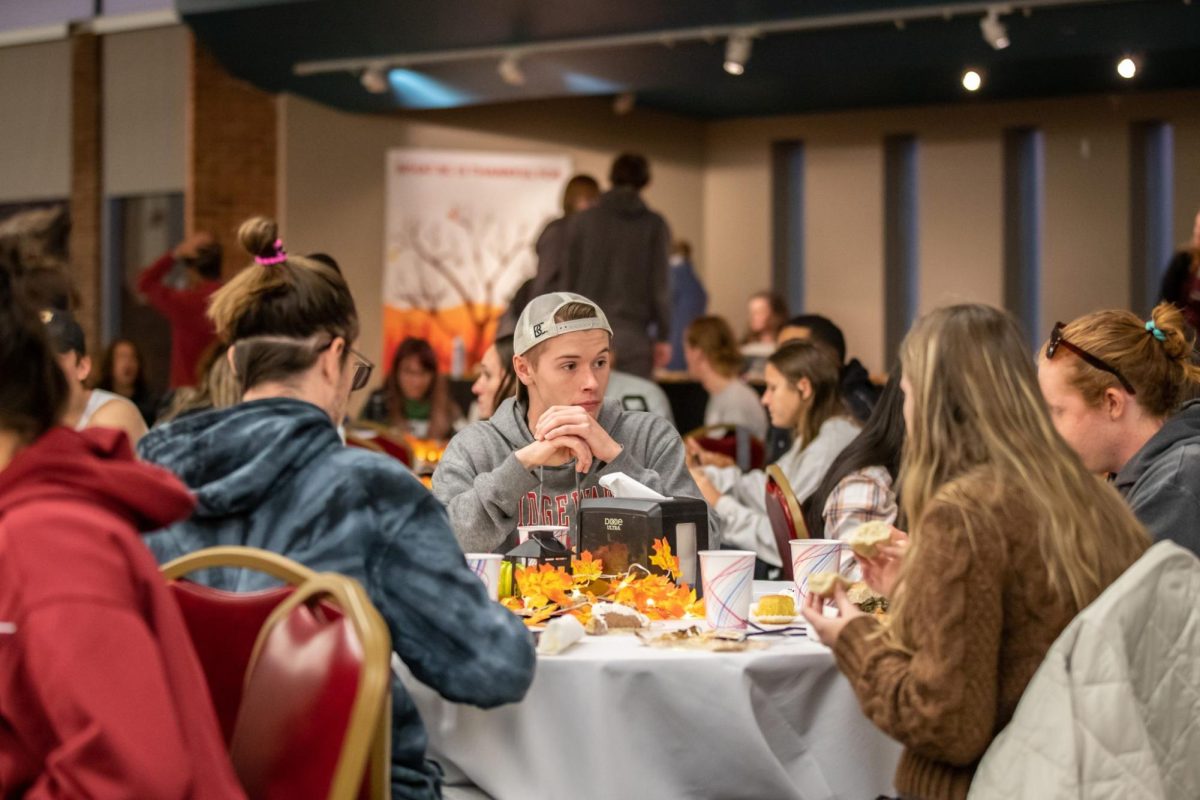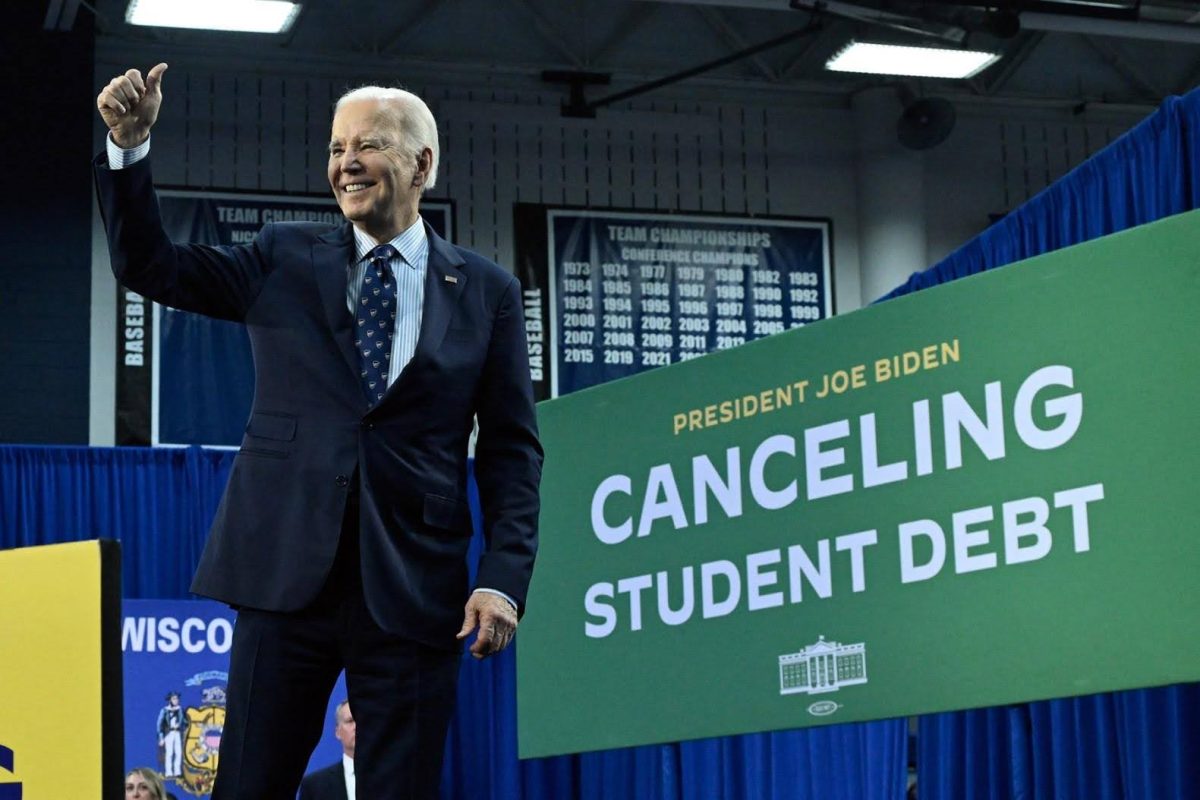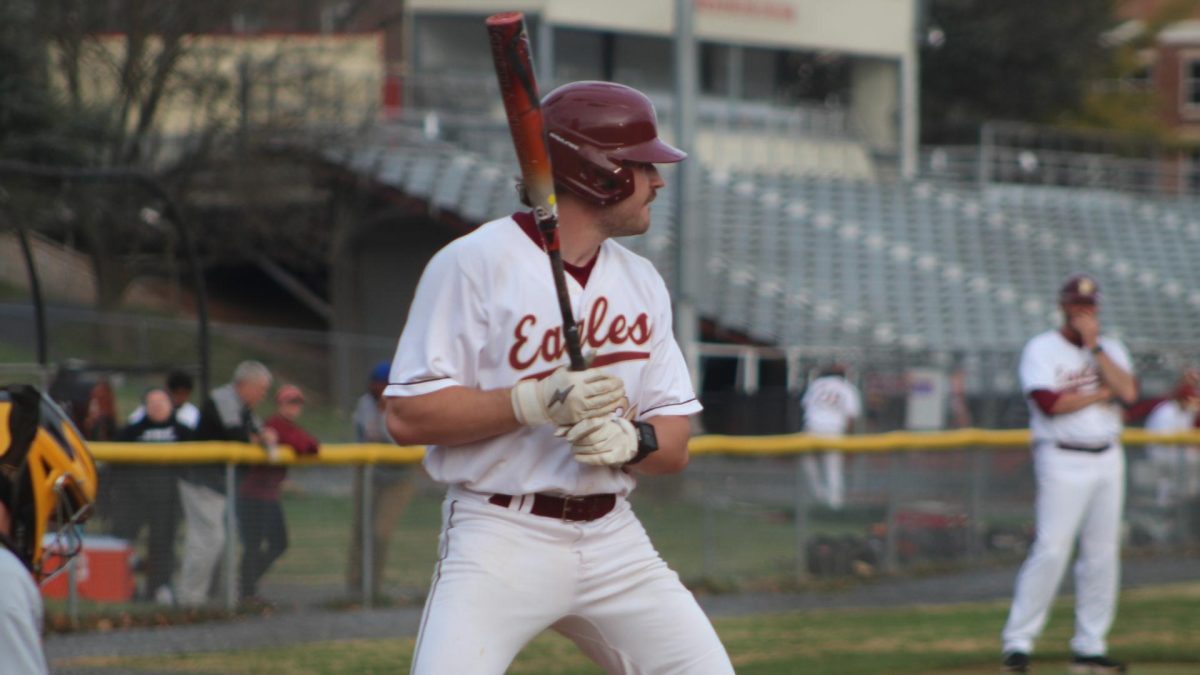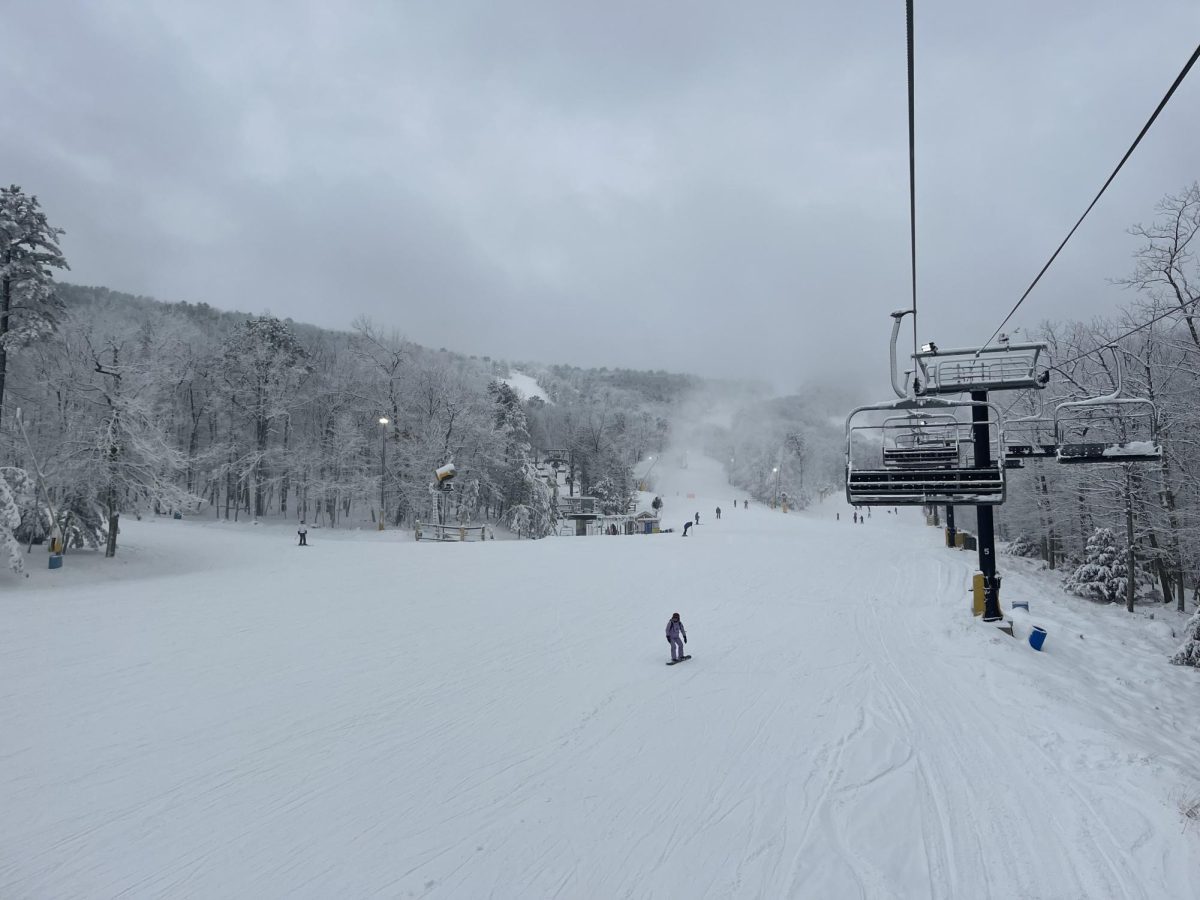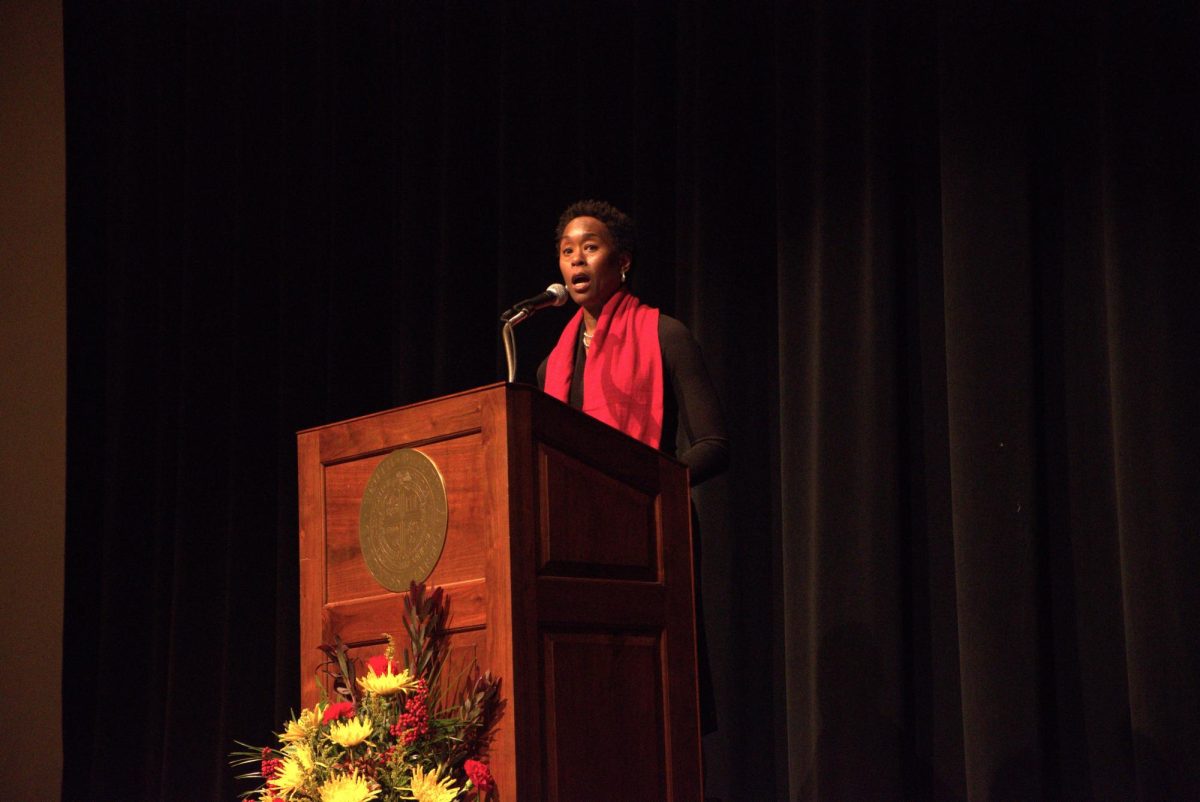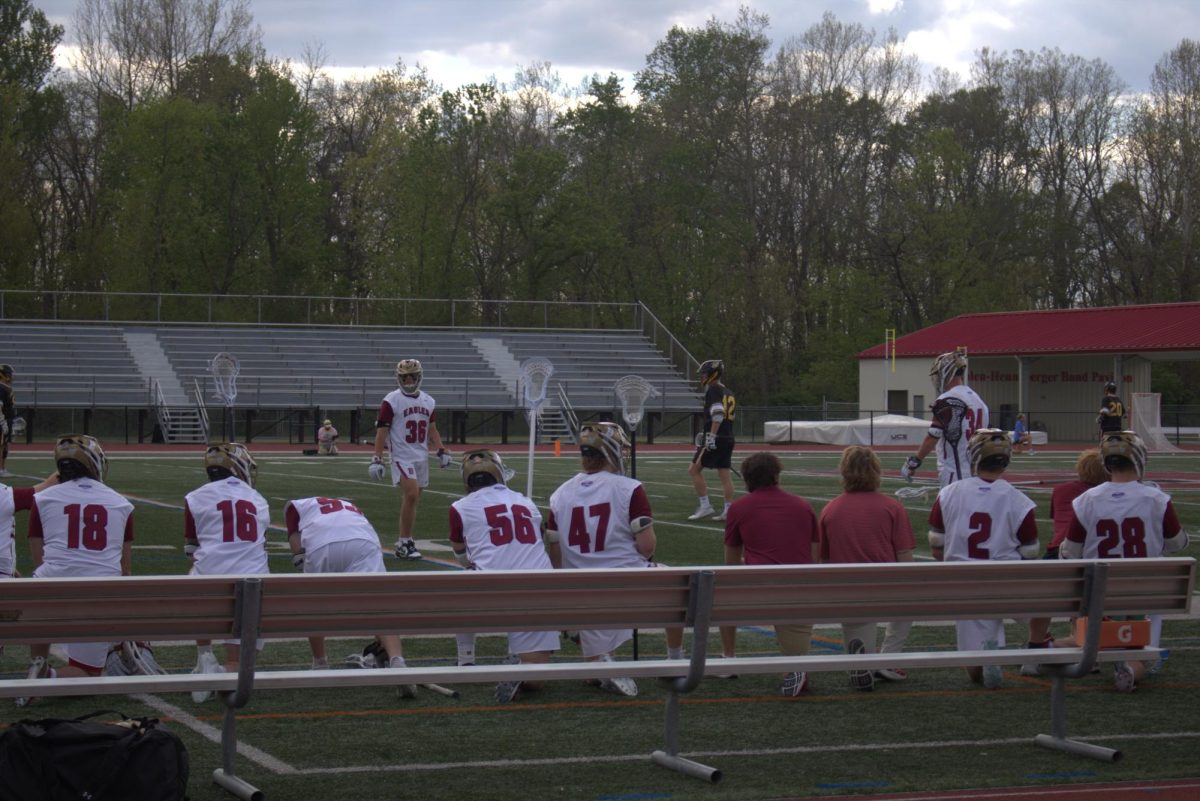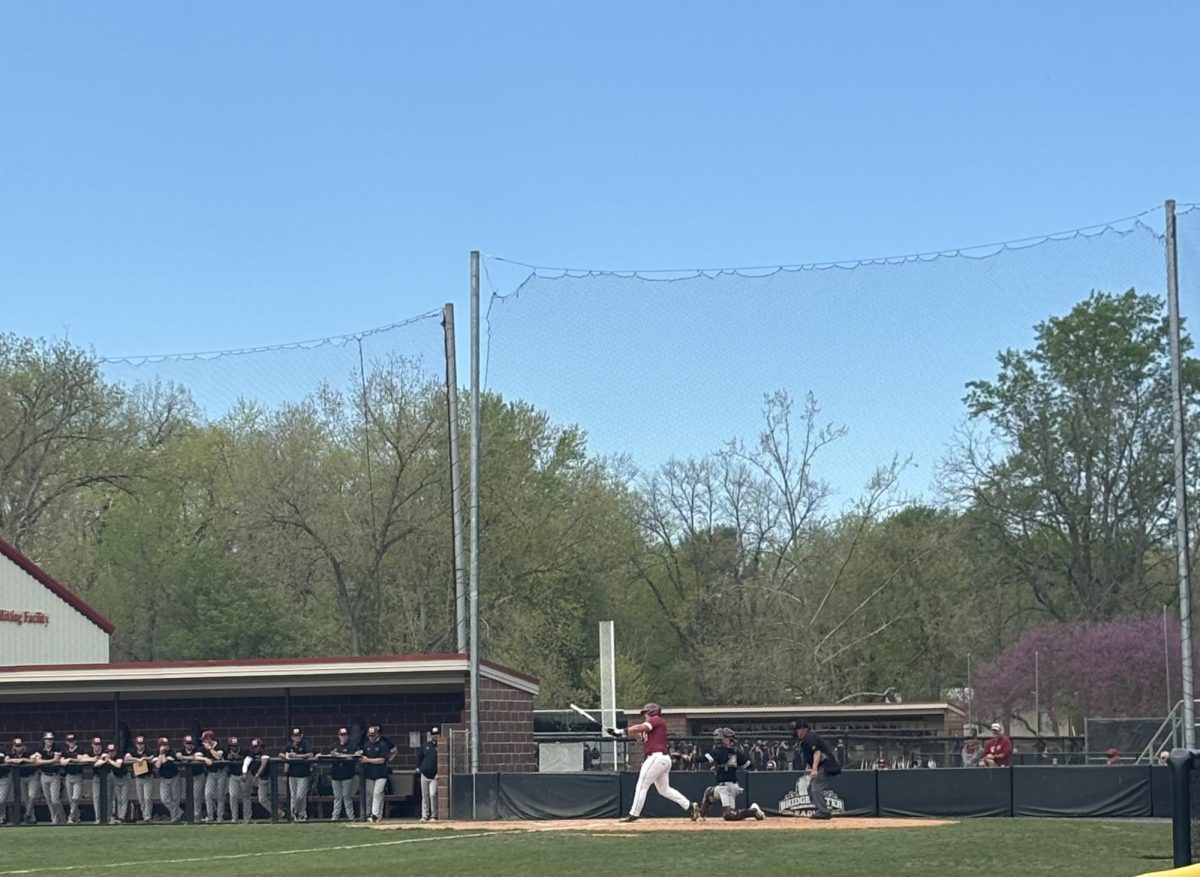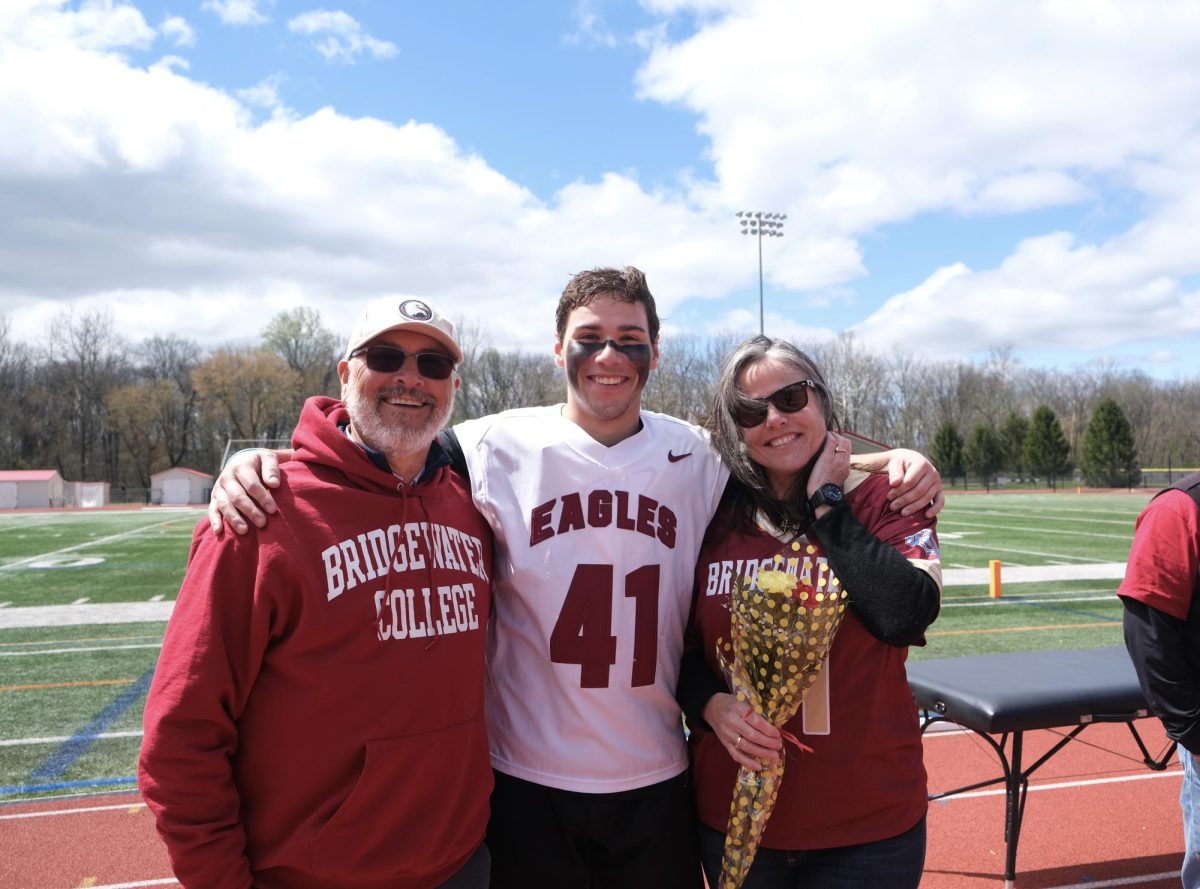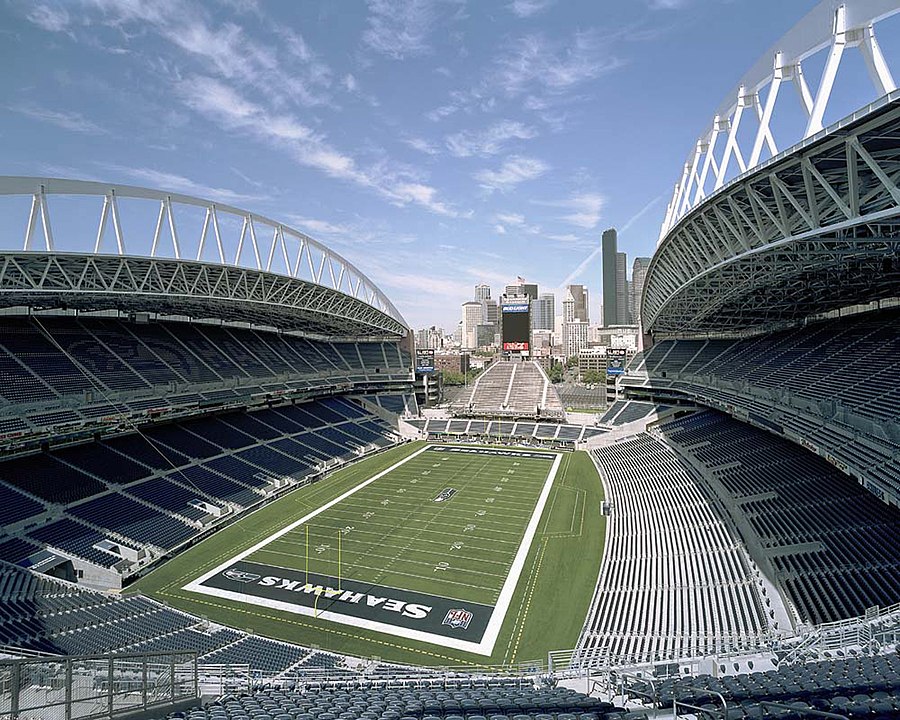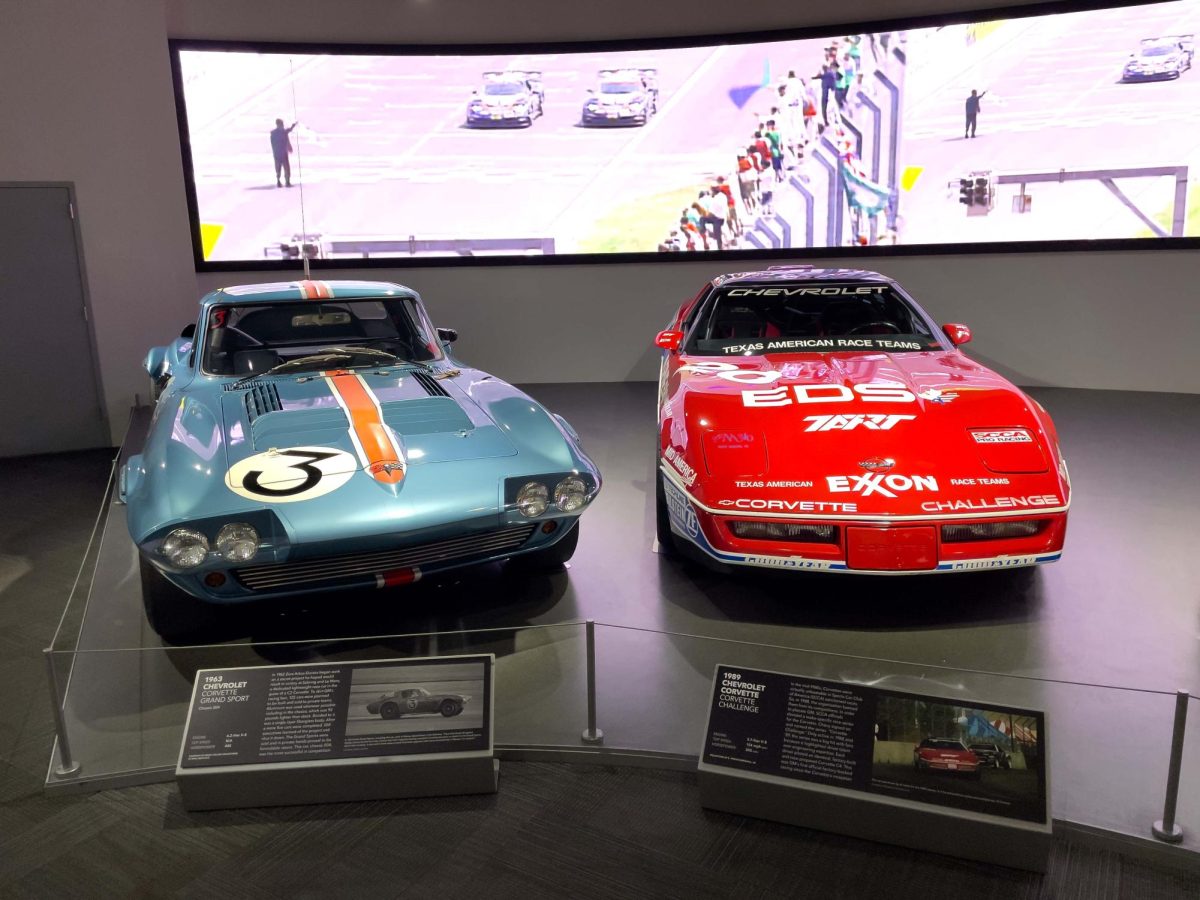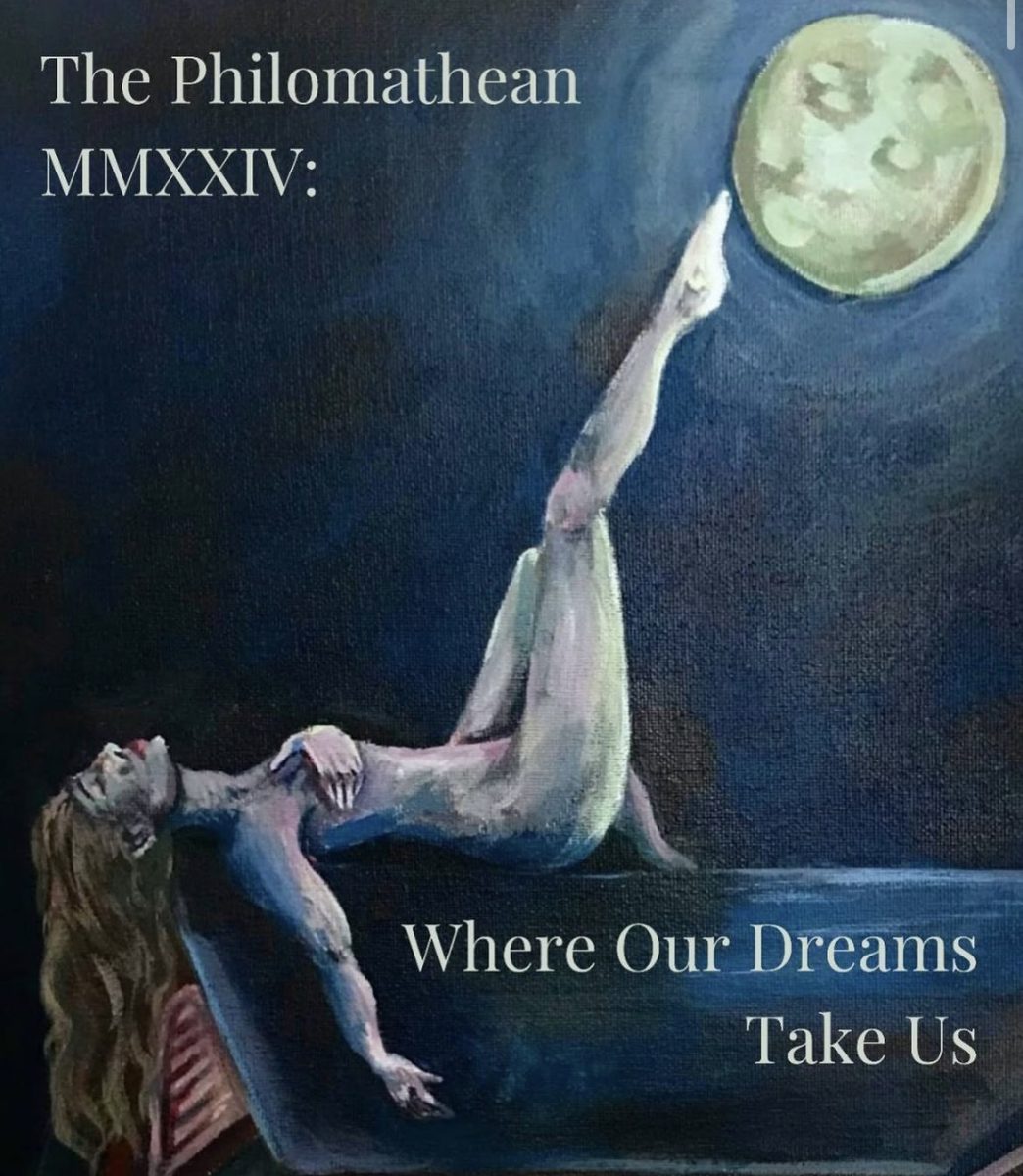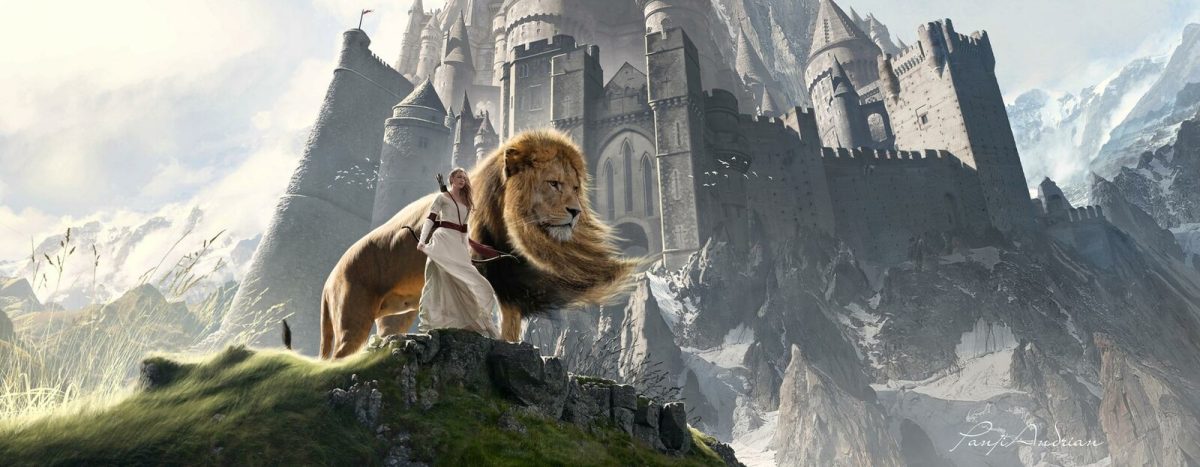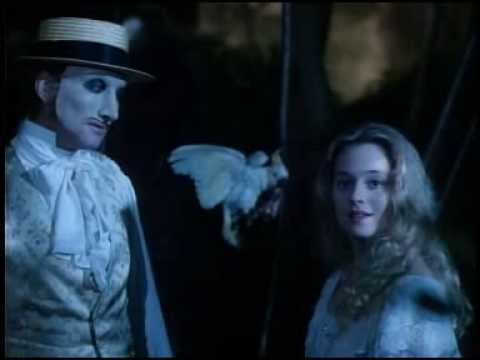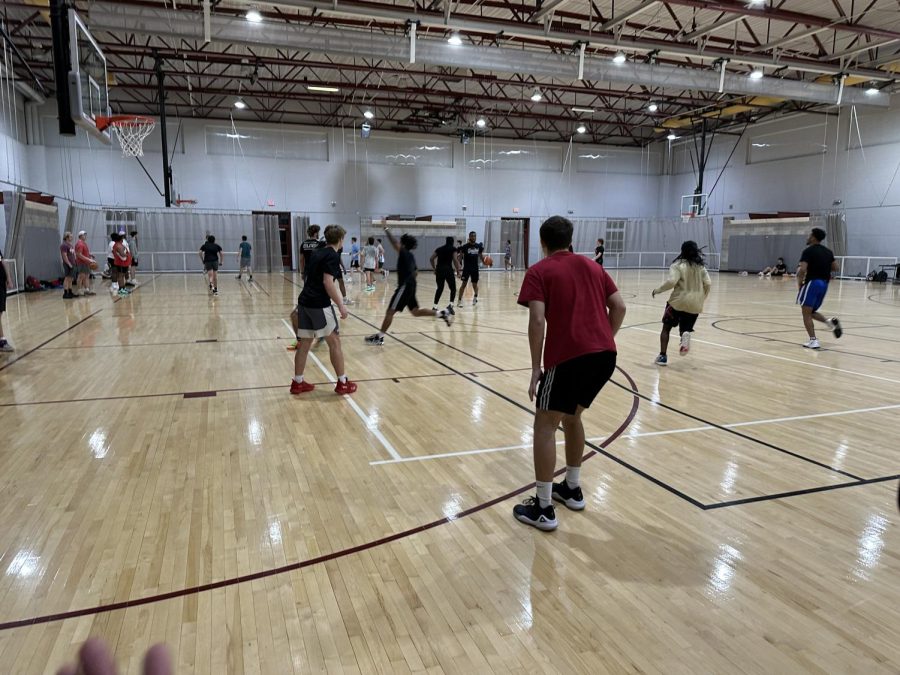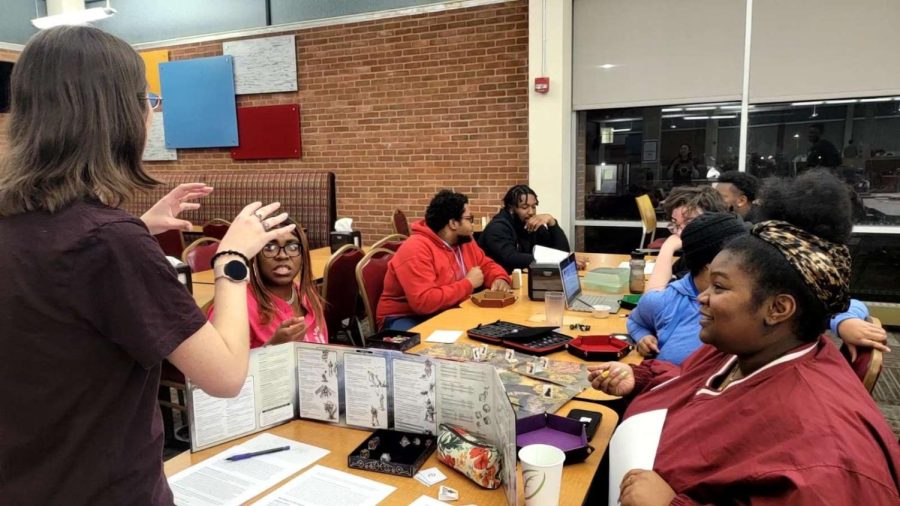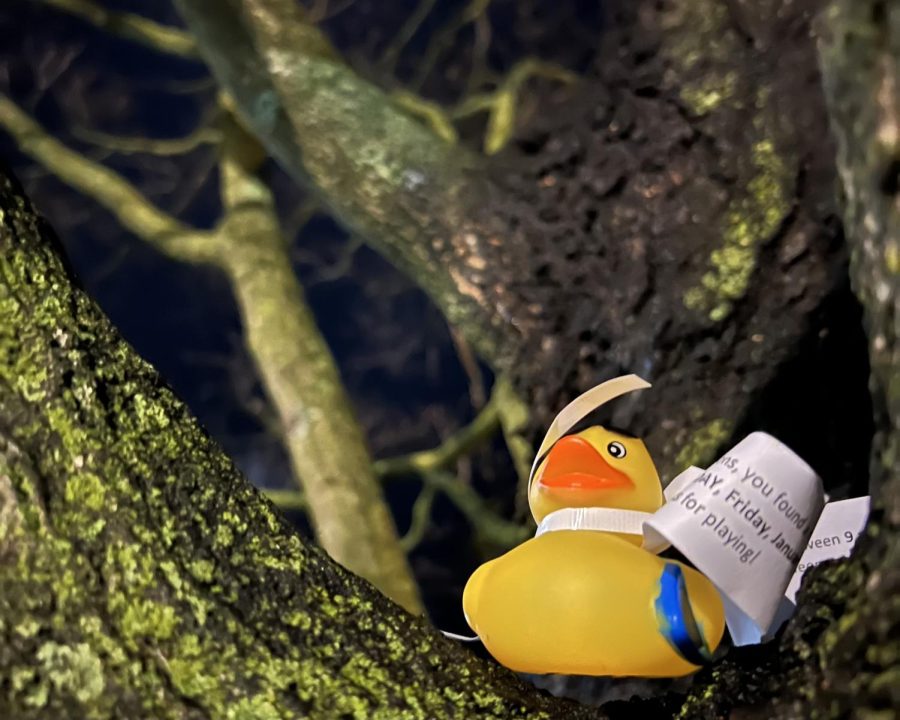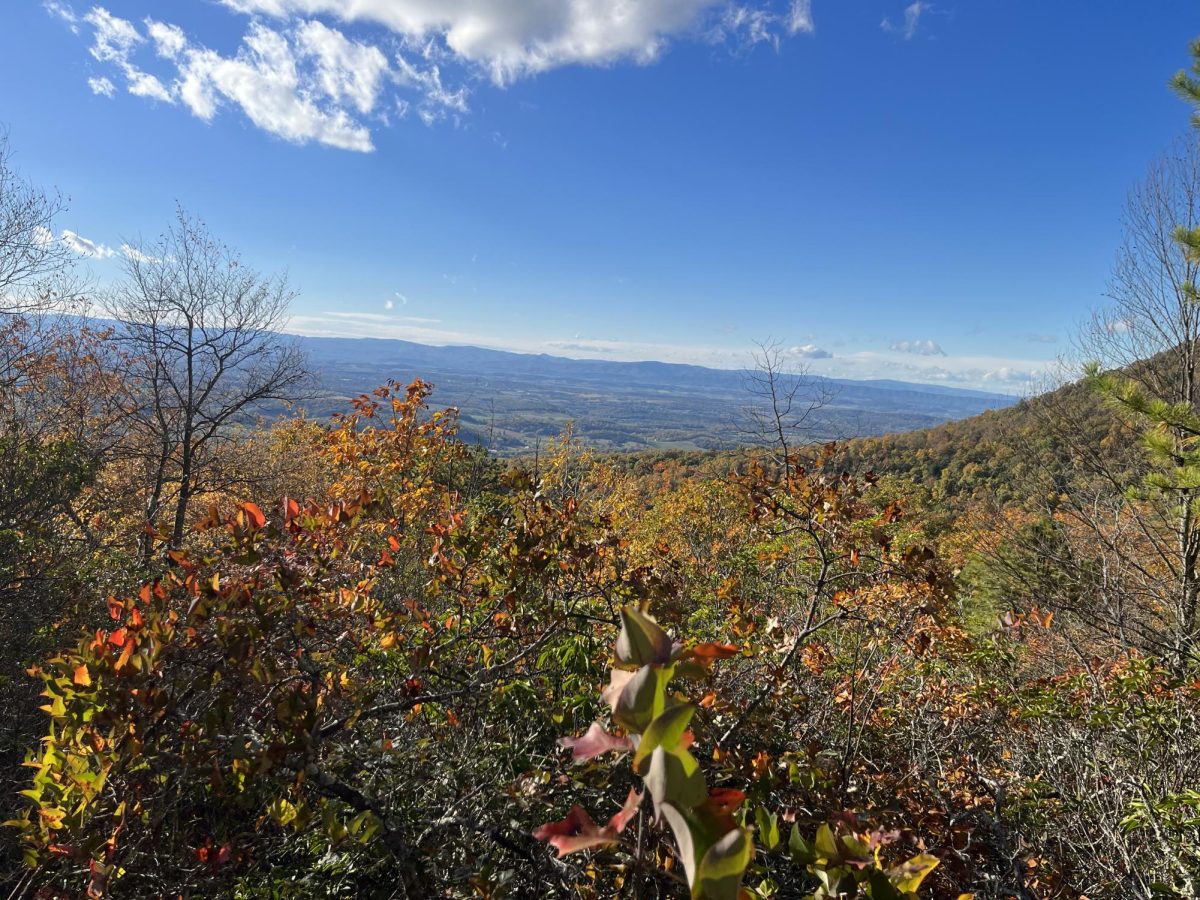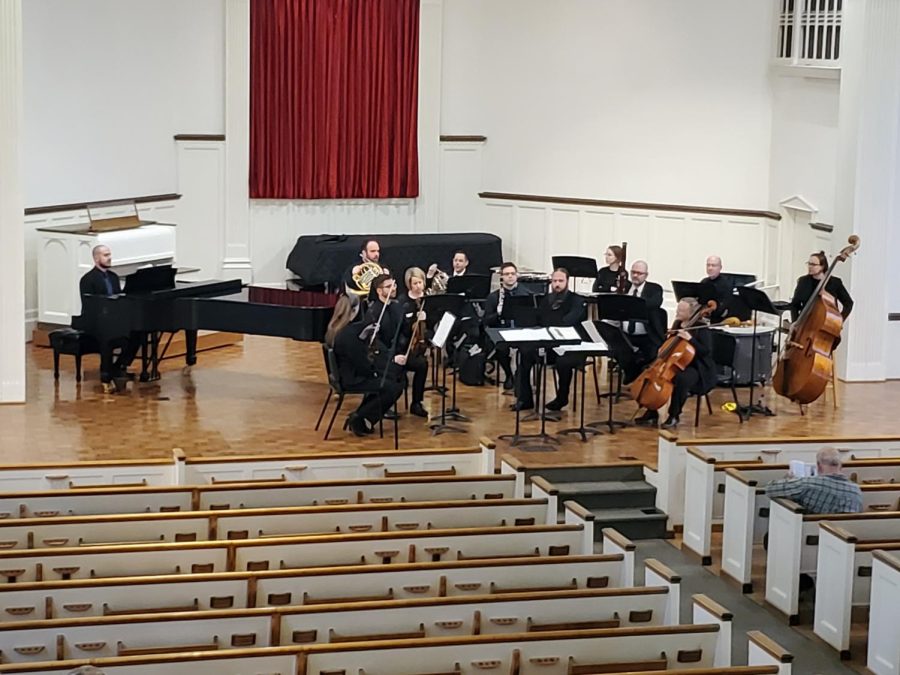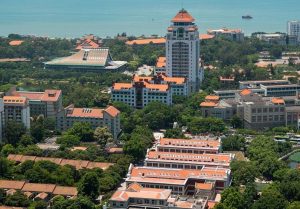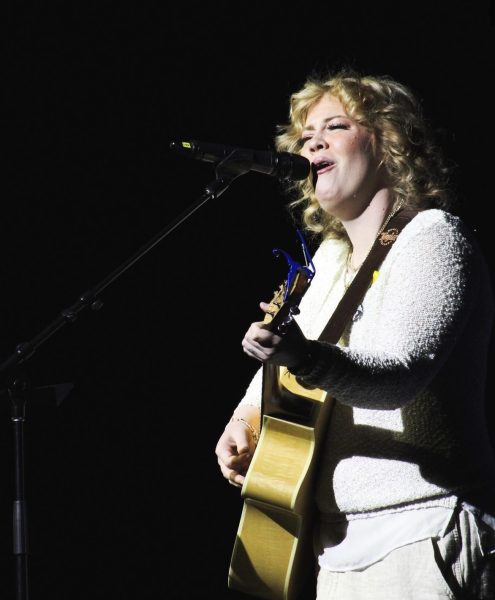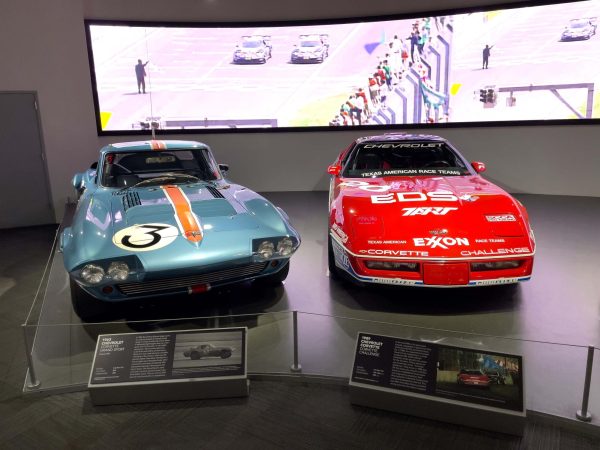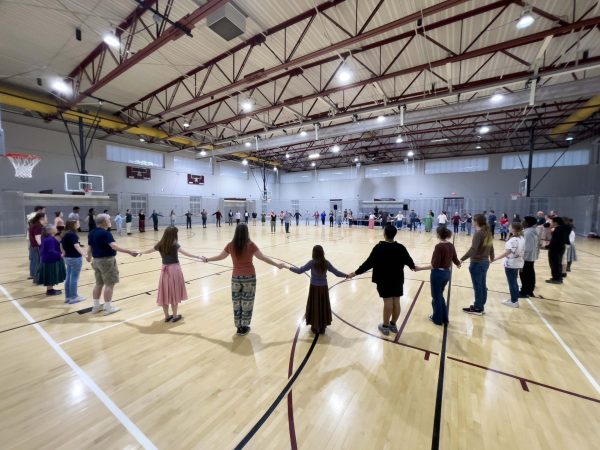Classical Music of the Americas
The Sinfonietta warms up in the Concert Hall before their performance in Cole Hall on April 13.
April 18, 2023
Bridgewater, Va.- The Cayambis Sinfonietta performed in Cole Hall on April 13. The symphony was founded by The Cayambis Institute for Latin American Studies in Music President and CEO John L. Walker is the conductor.
There are thirteen members of the symphony. In the wind section were flutist Elizabeth Lantz, clarinet player Yevgeny Dokshansky, bassoon player Zachary Millwood, horn one player Juan Berrios Roderiguez and horn two John Glaeser.
The strings section had violin one Charley Shafer, violin two Greg Childress, violist Stanley Beckwith, cellist Lisa Liske and bassist Katelyn Adams.
Al Wojtera and Miranda Hughes played in the percussion section, and Matt Cataldi was the pianist.
Walker and the organization are trying to add solely American music to their repertoire to show audiences the fundamental role American music plays.
“The music of the Americas is sadly not played, so we are doing our best to change that,” said Walker during the event.
The name of the group came from the indigenous group Cayambis, who united with nearby Ecuadorian tribes to resist the Incan invasion.
The performance consisted of two acts, with the first act consisted of six pieces, and the second act had four.
The overture from the opera, “Il Guarany,” was written by Antonio Carlos Gomes in 1870 and premiered in Milan, Italy. Walker arranged the piece.
“Two Fragments after the Song of Roland,” composed by Edward MacDowell, was written between 1887-1888. “Die Sarazenen,” known in English as “The Saracens” and “Die Schone Alda” tell parts of the story of the legend of Roland.
Next, Sixto Maria Duran’s Act IV finale from the opera “Cumanda” was played. Based on the 1877 novel, the 1917 opera premiered with Pedro Pablo Traversari’s libretto.
Ricardo Castillo’s ballet “La Doncella Icquic” is based on the Mayan myth of Ixquic, the daughter of Cuchumaquic. It premiered in 1941, though the composition date varies according to different sources.
The last piece of the first act was “O Garatuja,” which translates to “the doodler.” Based on Jose de Alencar’s novel, “O Garatuja: cronica dos tempos coloniais,” Alberto Nepomuceno premiered the work on October 28, 1904.
The opening of act two started with “Panamericana: Morceau caracteristique” by cellist and composer Victor Herbert. Premiered in 1901 with the Pittsburgh Symphony in Buffalo, Ny.
Next, Juan Bautista Plaza’s “El picacho abrupto” was performed. Premiered in 1926 for piano, it was originally called “El picacho de Galipan.”
“Reisado do Pastoreio, III. Batuque” was completed in 1930 by Oscar Lorenzo Fernandez. Arranged by Juan Lopez-Maya, this was the only piece not arranged by Walker.
Last but not least, the finale was Jose Pablo Moncayo’s “Huapango.” Moncayo was a Mexican pianist, percussionist, pedagogue, composer and conductor. “Huapango” was performed in a 1941 New York concert arranged by Carlos Chavez.



